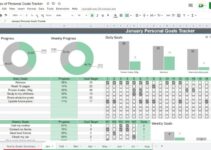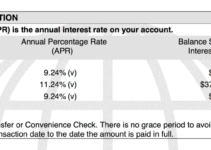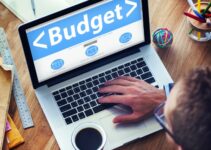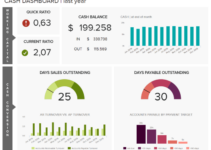In the realm of personal finance, 2024 promises to be a transformative year, marked by a surge in digital payment methods and innovative technologies. Embark on a journey with us as we delve into the Personal Finance Payment 2024 landscape, exploring emerging trends, groundbreaking technologies, and strategies for effective budgeting and financial planning.
Prepare to witness the rise of contactless payments, QR code-based transactions, and biometric authentication, as they redefine the way we manage our finances. We’ll also shed light on the potential of blockchain and cryptocurrency in shaping the future of personal finance payments.
Personal Finance Payment Trends in 2024
The personal finance landscape is undergoing a transformative shift, driven by the rapid adoption of digital payment technologies. In 2024, we anticipate several key trends that will shape how individuals manage their finances.
One prominent trend is the continued rise of mobile banking. With the proliferation of smartphones, mobile banking apps have become increasingly popular, offering users a convenient and secure way to manage their accounts, make payments, and access financial services on the go.
Impact of Mobile Banking
- Increased accessibility to financial services, particularly for individuals in remote areas or with limited access to traditional banking institutions.
- Enhanced convenience and time savings, allowing users to conduct financial transactions anytime, anywhere.
- Improved security measures, such as biometric authentication and two-factor authentication, to protect user data and prevent fraud.
Another significant trend is the growing adoption of peer-to-peer (P2P) payment apps. These apps allow users to send and receive money instantly and securely using their mobile devices. P2P apps are particularly popular for splitting expenses, paying bills, and transferring funds to friends and family.
Role of P2P Payment Apps
- Seamless and cost-effective way to transfer funds between individuals, eliminating the need for cash or checks.
- Increased convenience and speed, as payments can be made instantly and without the need for bank account information.
- Enhanced social interactions, as P2P apps allow users to add notes and messages to payments, fostering a sense of community.
In summary, the personal finance payment landscape in 2024 is expected to be characterized by a continued shift towards digital payment methods, driven by the growing popularity of mobile banking and P2P payment apps. These trends will not only enhance convenience and accessibility but also transform the way individuals manage their finances, fostering financial inclusion and empowering users to take greater control of their financial well-being.
Payment Technologies Shaping the Future

The future of personal finance is being shaped by a range of innovative payment technologies that are making it easier, faster, and more secure to manage money. These technologies include contactless payments, QR code-based transactions, and biometric authentication.
Contactless Payments
Contactless payments allow consumers to make purchases by simply waving their smartphone or credit card over a contactless payment terminal. This technology is becoming increasingly popular due to its convenience and speed. In 2023, contactless payments accounted for over 50% of all in-store transactions in the United States.
QR Code-Based Transactions
QR code-based transactions allow consumers to make payments by scanning a QR code with their smartphone. This technology is becoming increasingly popular in emerging markets, where it is often used to make payments for goods and services that are not available through traditional payment methods.
Biometric Authentication
Biometric authentication allows consumers to make payments using their unique physical characteristics, such as their fingerprint or face. This technology is becoming increasingly popular due to its security and convenience. In 2023, biometric authentication was used in over 1 billion payment transactions worldwide.
Blockchain and Cryptocurrency
Blockchain and cryptocurrency are two emerging technologies that have the potential to revolutionize personal finance payments. Blockchain is a distributed ledger technology that allows for secure and transparent transactions. Cryptocurrency is a digital currency that is not controlled by any central authority.
These technologies have the potential to make personal finance payments more efficient, secure, and accessible.
Budgeting and Financial Planning for 2024

In the evolving landscape of personal finance, budgeting and financial planning are more crucial than ever. To navigate the uncertainties of 2024, individuals must adopt effective strategies that align with their financial goals and aspirations. This involves implementing comprehensive budgeting systems, tracking expenses meticulously, setting realistic financial targets, and managing debt responsibly.
Additionally, leveraging digital tools and apps can significantly enhance personal finance management, providing users with valuable insights and empowering them to make informed decisions.
Expense Tracking
Tracking expenses is a fundamental step towards gaining control over personal finances. It helps individuals identify areas where they may be overspending and provides a clear understanding of their financial habits. There are numerous methods for tracking expenses, including traditional methods such as spreadsheets or notebooks, as well as digital tools like budgeting apps.
These apps offer features such as automatic transaction categorization, expense tracking, and budgeting.
Financial Goal Setting
Setting financial goals is essential for providing direction and motivation for personal finance management. These goals should be specific, measurable, achievable, relevant, and time-bound. Short-term goals may include saving for a vacation or a down payment on a car, while long-term goals could involve retirement planning or investing for the future.
Having clearly defined goals helps individuals prioritize their spending and make informed decisions.
Debt Management
Managing debt effectively is crucial for financial well-being. High-interest debt, such as credit card balances, can be a significant burden and hinder financial progress. Individuals should prioritize paying off high-interest debt first, using methods such as the debt snowball or debt avalanche.
Creating a debt repayment plan and sticking to it can help reduce debt and improve overall financial health.
Digital Tools for Personal Finance
Digital tools and apps have revolutionized personal finance management. Budgeting apps provide a convenient and efficient way to track expenses, set financial goals, and manage debt. They offer features such as automatic transaction categorization, expense tracking, budgeting, and financial planning tools.
By leveraging these tools, individuals can gain a comprehensive view of their financial situation and make informed decisions.
Financial Literacy and Payment Awareness: Personal Finance Payment 2024
Financial literacy plays a crucial role in empowering individuals to make informed financial decisions, including responsible payment habits. It involves understanding basic financial concepts, such as budgeting, debt management, and investment strategies. By enhancing financial literacy, individuals can navigate the complexities of personal finance, avoid financial pitfalls, and achieve long-term financial stability.
Resources and Initiatives for Financial Literacy, Personal Finance Payment 2024
Numerous resources and initiatives are available to improve financial literacy. These include:
- Government Programs:Many governments offer financial literacy programs through schools, libraries, and community organizations.
- Nonprofit Organizations:Organizations like the National Endowment for Financial Education (NEFE) and the Financial Literacy & Education Commission (FLEC) provide financial education resources and programs.
- Financial Institutions:Banks and credit unions often offer financial literacy workshops and online resources to their customers.
- Online Resources:Websites like the Consumer Financial Protection Bureau (CFPB) and Khan Academy offer comprehensive financial literacy materials.
Education and Responsible Payment Habits
Education is essential in promoting responsible payment habits and preventing financial fraud. By teaching individuals about the consequences of late payments, overspending, and identity theft, they can make informed decisions and avoid costly mistakes. Financial literacy programs should emphasize:
- Budgeting and Money Management:Understanding how to create and stick to a budget helps individuals control their spending and avoid debt.
- Credit and Debt Management:Education on responsible credit use, including understanding credit scores and interest rates, is crucial for financial well-being.
- Fraud Prevention:Teaching individuals how to recognize and protect themselves from financial fraud is essential for safeguarding their financial information.
Closure
As we approach the horizon of 2024, the landscape of personal finance payments is poised for a remarkable evolution. By embracing financial literacy, harnessing innovative technologies, and implementing sound budgeting practices, we can navigate the future of money management with confidence and financial freedom.
FAQ Guide
What are the key trends shaping personal finance payments in 2024?
The shift towards digital payment methods, contactless payments, QR code-based transactions, and biometric authentication are among the key trends driving the evolution of personal finance payments.
How can I improve my financial literacy and payment awareness?
Engage with resources and initiatives aimed at improving financial literacy, such as workshops, online courses, and educational materials provided by financial institutions and government agencies.
What are the benefits of using digital tools and apps for personal finance management?
Digital tools and apps offer convenience, real-time tracking of expenses, automated budgeting, and personalized financial insights, empowering you to make informed decisions and optimize your financial well-being.








